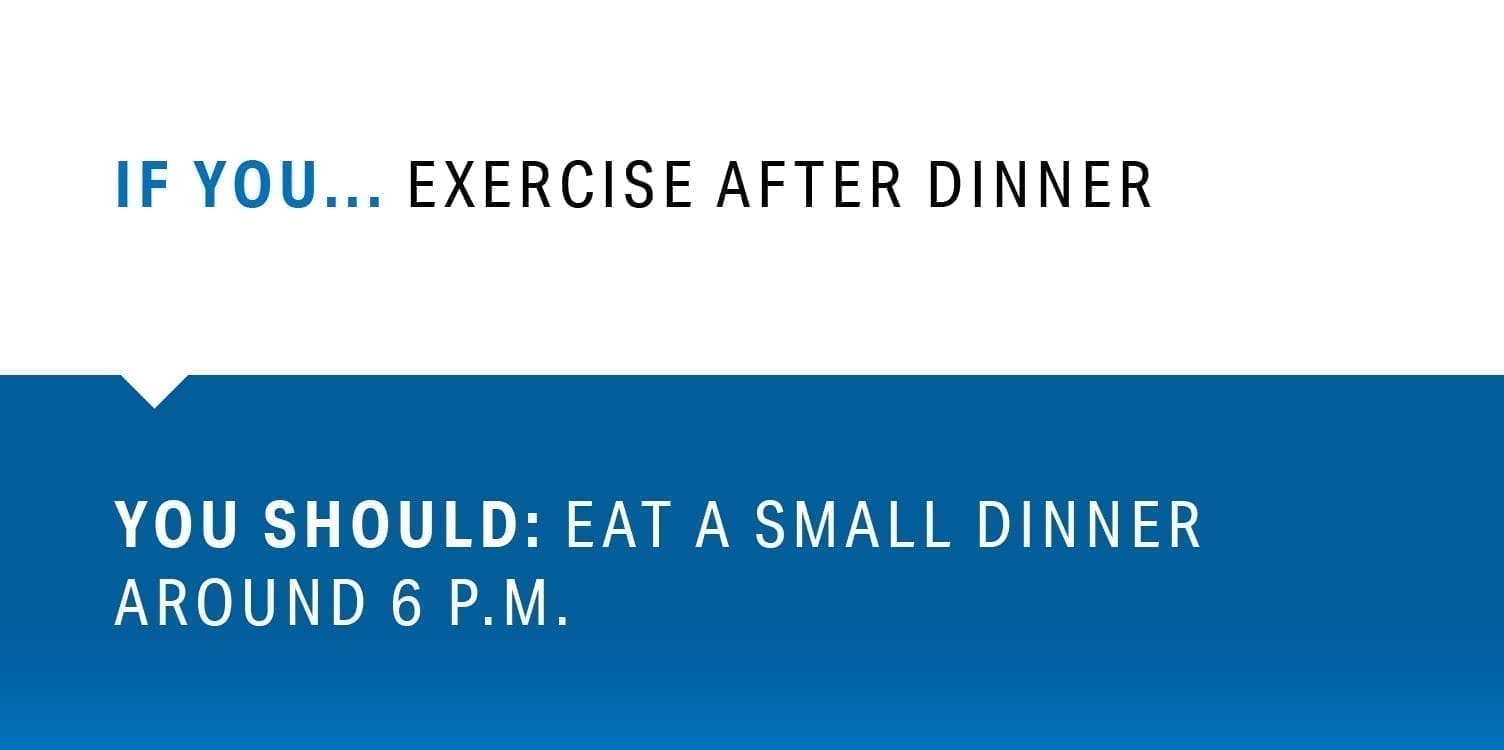No matter the time of day you prefer to exercise, you can time your eating and watch what you eat to maximize your workouts and stabilize blood sugar levels.

However, because you fasted overnight, eating something before a longer workout is recommended. If you choose to exercise on an empty stomach, you may lose the benefits of breakfast. In an August 2018 study from the American Journal of Physiology-Endocrinology and Metabolism, researchers had participants eat a breakfast two hours before a 60-minute cycling workout, then they measured blood glucose levels. They found eating breakfast increased the rate at which bodies burned carbohydrates while exercising and how fast the body digested and metabolized the food eaten after exercise.
With the popularity of intermittent fasting, however, working out on an empty stomach is becoming more common. Mornings can “be a good time to experiment with intermittent fasting and see how your body feels after the workout,” says Jessica Tranchina, co-founder of Generator Athlete Lab. After a trial, she suggests to asking yourself, ‘Am I strong, weak, hungry and/or tired?’ “You’ll be surprised that once you get into the workout, your hunger may fade and you have strength you didn’t think you would have,” she says.
If you choose to eat before your workout, healthy options include:
- Oatmeal with milk. This is what the participants in the above referenced study ate.
- Eggs. In a peer-reviewed study published in Nutrition Research, eating eggs for breakfast caused the body to have less plasma glucose variation than eating something with carbohydrates, like a bagel.
- Berries with Greek yogurt. Berries offer anti-inflammatory properties, according to a study from the Journal of Atherosclerosis and Thrombosis.
- Greens or a protein powder drink. Tranchina recommends mixing it with a little bit of orange juice.

For lunchtime workouts, you’ll benefit from eating something small shortly beforehand. For example, if you start your workout at noon, you can eat a snack as late as 11:30 a.m. According to a 2017 study published in the Frontiers in Endocrinology, you can start exercising about 30 minutes after the beginning of a meal. This helps to stabilize your blood glucose concentration.
Scott Burgett, founder of Plant Based Scotty, recommends eating something with simple sugars, protein and a small amount of fat. “That way, it’s easily digestible and useful to your cells,” he says. Burgett suggests mixing a half a banana with one tablespoon of peanut butter, and a piece of fruit with a protein shake.

Because you will work out greater than two hours after a meal, if you eat lunch around noon, you should consume a bigger portion for lunch than other meals. Mitchell Blume, RDN, of EduPlated offers up potential options:
- Two-egg omelet (veggies/cheese/meat) plus one slice whole-wheat toast or an English muffin and/or one cup fresh fruit.
- Chicken breast, sweet potato, roasted/sauteed veggies.
- Rice bowl with brown rice, chicken/pork/tofu and roasted veggies.

If you begin your workout around 7–8 p.m., Blume recommends a meal beforehand that is a small portion size and low in protein and fat as these nutrients take longer to break down.
He provides the following options:
- Sandwich with nut butter and fresh fruit or fruit preserve.
- Smoothie with milk or almond milk, fresh fruit and nut butter or protein powder.
- Greek yogurt with fresh fruit and whole-grain cereal.
POST-WORKOUT EATING
Burgett says you have a four-hour window, which means you can eat right after you work out or wait a few hours until you feel hungry for your next full meal. “Your body will best utilize the nutrients during the window, but if you happen to eat outside it, that’s OK,” he says.




